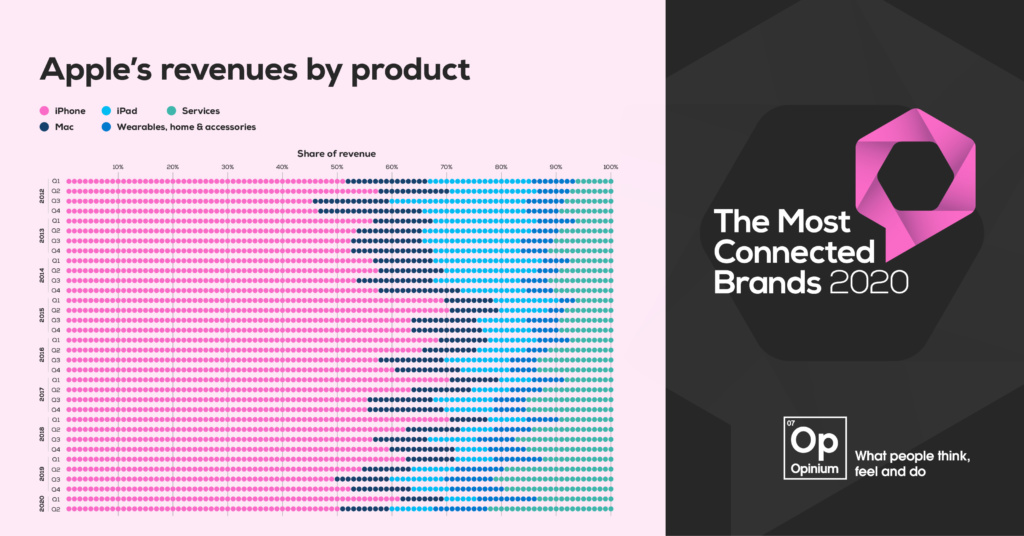Most Connected Brands – Apple (7th)

Going low to stay high
Does a brand need to be loved to do well?
Not always.
Apple is up seven places in this year’s ranking and back in the Top 10, but maintains a distinctly mediocre performance in Emotion, sitting all the way back 33rd on this metric. In fact, they’ve consistently underachieved on consumer love since our first edition of the Most Connected Brand Index, despite this being the largest driver of brand usage in our model.
So, what gives?
Well, to put it simply, they’ve made it as easy as possible to own an Apple product, maintaining high levels of mental availability and, more importantly, pushing into the mass market with lower costing products.
Remaining aloft through prominence and brand image
Apple have very little problem with brand salience, maintaining high TV and OOH spend in support of product launches, as well as through digital ads that have been used to push messaging on their user data security measures. It’s not news that UK consumers see Apple as iconic, but that it is the 3rd most associated brand with ‘security’ proves that it’s always on messaging is hitting the mark.
Whilst not as dynamic or distinctive as in 2018, Apple is still rated as the brand most looking to push the boundaries, a position it has maintained over the years despite the stagnation in physical product feature innovation.
The fact that the majority of changes between iPhones and macs have been under the hood seems not to matter when you’ve built such a strong image on your ground-breaking heritage and free-thinking founder.
The other twin pillar to the Apple image, that aura of premiumness and exclusivity, also remains rooted in our memory structures. In fact, Apple ranks a stonking 97 out of 100 in terms of being inclusive and 80 out of 100 in catering for diverse groups of people. Remember, this in spite of Apple owning over 50% of the UK mobile phone market, almost double that of its closest competitor Samsung – so hardly that exclusive.
Apple’s combination of mental availability and brand distinction is enough to make Byron Sharp get up in the morning and add them as an example in his best-selling book, and yet, none of this matters without increasing the number of people actually buying their products.

Pushing premium to the mid-market
Over the last eight years, roughly 75% of Apple’s revenues have come from either their iPhones, iPads or Macs, and so to reach more of the market, they’ve turned to creating cheaper versions of their devices (or has everything else just got more expensive?).
The iPhone XR, re-vamped iPhone SE, re-emergence of the MacBook Air and even iPad Air have helped to bring that feel good premium innovation to the masses. See the results for yourself: Apple comes 9th in brands that you can’t live without, on par with social media giants and supermarkets, and 6th in terms of providing a sense of belonging.
They might not be as loved as 33 other brands in here, but when it comes to nailing the basics, Apple has it in spades.
Download the full report at www.mostconnectedbrands.com





